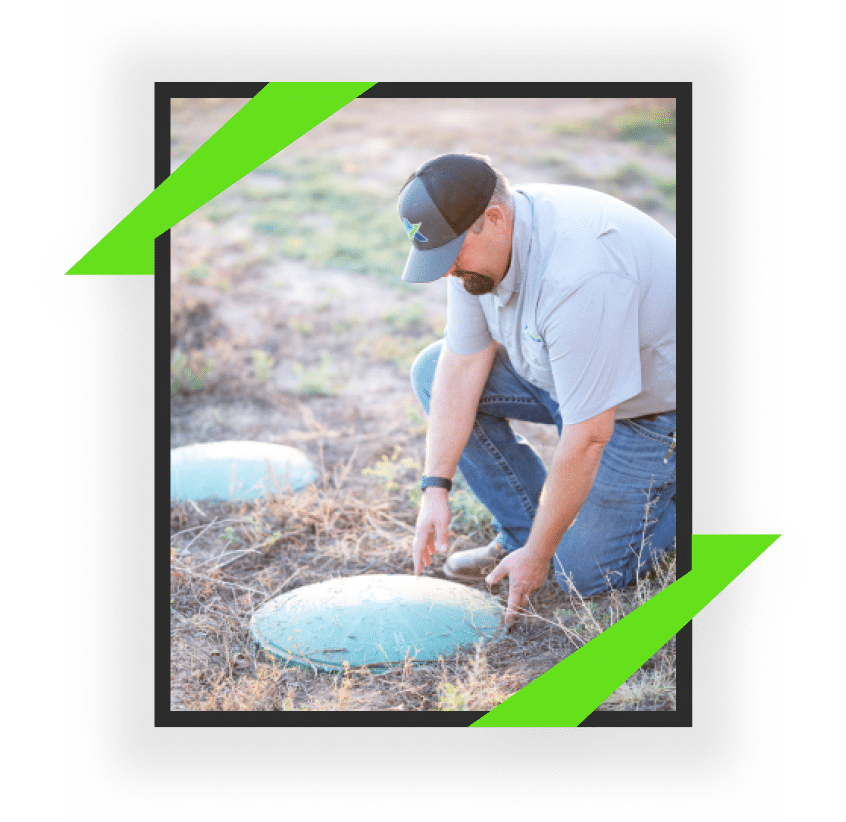We believe in outstanding customer service, honest pricing, attention to detail, and superior workmanship. Whenever we provide septic plumbing or any other type of service at your home or business, we’ll treat you and your property with the utmost respect.
Septic Tank Service in Lubbock, TX
Septic Pumping

Experts in Septic Plumbing
There are several reasons you might need immediate service for your tank, such as foul odors, slow drainage, and unexpected vegetation growth. If you don’t have a specific problem that needs addressing, it’s recommended that you get your septic tank serviced every 2 to 3 years. How often you need pumping will depend on your own situation.
Our septic plumbing services include:
- Regular Pumping
- Inspections and Maintenance
- Repairs and Upgrades
- Drain Cleaning
- System Design and Installation
If there’s any sign that your septic system is not operating like it should, give us a call and we can pinpoint the problem. We have expert diagnostics equipment and experience dealing with all types of problems. We also stay up to date on all the latest industry standards as well as government regulations and codes.
Fast and Friendly Septic Tank Service in Lubbock
As a family-owned and -operated company that’s been serving Panhandle Texas for more than 30 years, we know customer satisfaction is important. That’s why we’ll respond to all of your septic pumping and other service needs quickly and always perform high-quality work. We never cut corners because we know anything less than perfection could affect your family’s health and comfort. Take advantage of one of our regular service plans to ensure your tank gets pumped and cleared without giving it a second thought.
In Lubbock, maintaining a properly functioning septic tank system is essential for the health and hygiene of our valued neighbors. Our professional plumbers provide comprehensive solutions to ensure optimal performance and longevity of septic systems. They’re equipped with the knowledge and tools to handle everything from routine maintenance and inspections to major repairs and pumping services. We understand the unique conditions of the area and strive to deliver reliable and efficient septic tank services that exceed our customers’ expectations.

The South Plains
©2024 Action Air Plumbing and Septic. All Rights Reserved. License: TACLB26320E / RMP43727 (Jordan Ohlmann) / OS0035135 / BP0018223 / OS0034828. Privacy Policy. Web Design and Internet Marketing by RYNO Strategic Solutions
